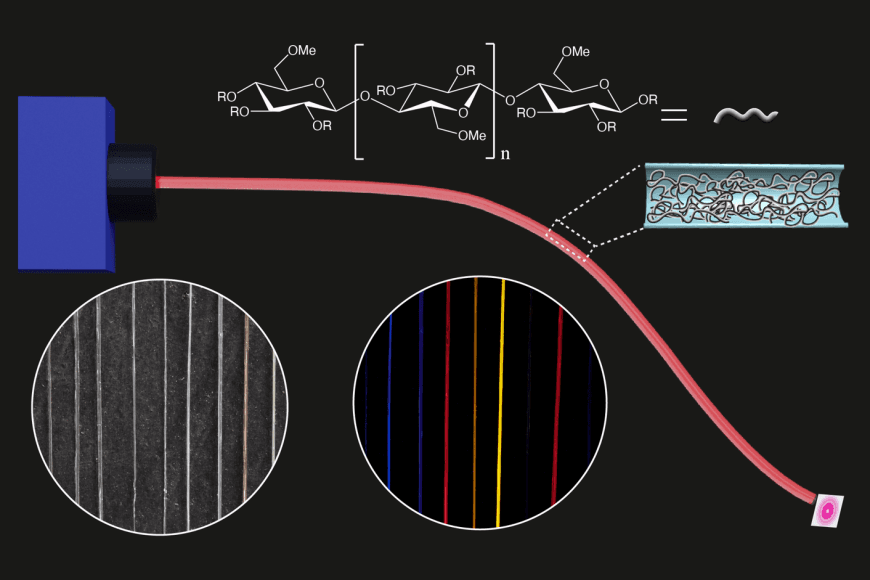Sustainable optical fibers developed from methylcellulose

The state-of-the-art silica glass optical fibers can carry light signals over tens of kilometers with very low optical loss and provide high-capacity communication networks. However, their brittleness, low stretchability and energy intensiveness make them less suitable for local short-range applications and devices such as automotive, digital home appliances, fabrics, laser surgery, endoscopy and implantable devices based on optical fibers. The sustainable solution to these may be found within biopolymer-based optical fibers.
“The wide availability of cellulosic raw materials provides an excellent opportunity to unravel the hidden potential of renewable materials for practical applications through sustainable fiber processing routes,” says Associate Professor Nonappa, whose research team at Tampere University is developing biopolymer-based optical fibers for short-distance applications.
Conventionally, the polymer or plastic optical fibers are used for short-distance applications, but their processing may involve relatively high temperatures and the use of hazardous chemical treatment.
“By using methylcellulose hydrogel, we have shown that optical fibers can be produced at room temperature using a simple extrusion method without any chemical crosslinkers. The resulting fibers are highly transparent, mechanically robust, flexible and show low optical loss,” Nonappa states.
Biopolymer-based optical fibers suitable for multifunctional sensors
In addition to pure light signal transmission, the methylcellulose optical fibers can be feasibly modified and functionalized.
“The hydrogel matrix allows straightforward addition of various molecules and nanoparticles without compromising the mechanical properties or light propagation abilities of the fibers making them suitable for multifunctional sensors”, says doctoral researcher Ville Hynninen, the first author of the paper.
For example, incorporating an extremely low mass fraction of protein-coated gold nanoclusters produced luminescent optical fibers, and acted also as a fiber-based toxic metal ion sensor.
Overall, the presented results and the abundance of cellulosic derivatives and raw materials encourage further research and optimization of cellulose-derived optical components and devices.
The work results from a collaboration between the research groups of Professor Nonappa at Tampere University and Professor Olli Ikkala and Professor Zhipei Sun at Aalto University. The research was performed under the framework of the Academy of Finland´s Photonics Research and Innovation (PREIN), FinnCEREs Materials Cluster flagships and HYBER Centre of Excellence.
Read the full article “Luminescent Gold Nanocluster-Methylcellulose Composite Optical Fibers with Low Attenuation Coefficient and High Photostability”which was published in Small.






